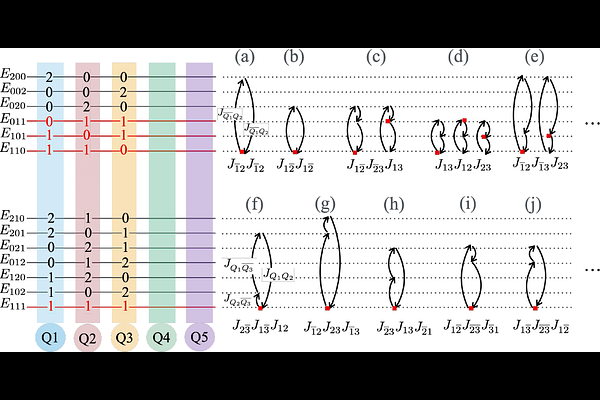Surface-Code Hardware Hamiltonian

Surface-Code Hardware Hamiltonian
Xuexin Xu, Kuljeet Kaur, Chloé Vignes, Mohammad H. Ansari, John M. Martinis
AbstractWe present a scalable framework for accurately modeling many-body interactions in surface-code quantum processor units (QPUs). Combining a concise diagrammatic formalism with high-precision numerical methods, our approach efficiently evaluates high-order, long-range Pauli string couplings and maps complete chip layouts onto exact effective Hamiltonians. Applying this method to surface-code architectures, such as Google's Sycamore lattice, we identify three distinct operational regimes: computationally stable, error-dominated, and hierarchy-inverted. Our analysis reveals that even modest increases in residual qubit-qubit crosstalk can invert the interaction hierarchy, driving the system from a computationally favorable phase into a topologically ordered regime. This framework thus serves as a powerful guide for optimizing next-generation high-fidelity surface-code hardware and provides a pathway to investigate emergent quantum many-body phenomena.